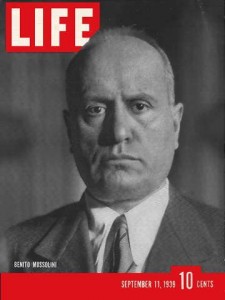 Now that I’ve got your attention let me explain what I mean by my title. I currently finished reading The End of Reform by Alan Brinkley for one of my APU courses. Brinkley argues that the time period from 1937-1945, the “second half” of the New Deal, was the “end of reform.” Americans had switched from a more militant and aggressive “statist” philosophy in dealing with the Great Depression to a more pro capitalist and new “liberal order.” These changes are attributed to the embrace of a consumer oriented capitalist economy instead of a largess in government control, regulation, and spending, as the New Deal was initially created for. The reasons for the change were due to the recession of 1937, the rise of conservatism against the New Deal, and the changing of FDR’s “brain trust” from orthodox New Deal leaders to a more modern liberal one. The book is pretty informative, and his arguments are well argued—even if you disagree with his conclusions.
Now that I’ve got your attention let me explain what I mean by my title. I currently finished reading The End of Reform by Alan Brinkley for one of my APU courses. Brinkley argues that the time period from 1937-1945, the “second half” of the New Deal, was the “end of reform.” Americans had switched from a more militant and aggressive “statist” philosophy in dealing with the Great Depression to a more pro capitalist and new “liberal order.” These changes are attributed to the embrace of a consumer oriented capitalist economy instead of a largess in government control, regulation, and spending, as the New Deal was initially created for. The reasons for the change were due to the recession of 1937, the rise of conservatism against the New Deal, and the changing of FDR’s “brain trust” from orthodox New Deal leaders to a more modern liberal one. The book is pretty informative, and his arguments are well argued—even if you disagree with his conclusions.
But one reason he mentioned halfway through his book really got me thinking. Brinkley’s support for his thesis makes sense—recession, changing leaders, etc. But his take on how the totalitarian regimes overseas in Europe affected American feelings on what role the “state” should play was much more significant than he bothered to mention. Brinkley writes that
“No one giving serious thought to the nature and role of government could remain unaffected by the character of the regimes the United States and its allies were fighting in World War II. As early as the mid-1930s, a revulsion from and fear of totalitarian states of Europe—Hitler’s Germany, Mussolini’s Italy, Stalin’s Soviet Union—had begun to penetrate the thinking of many liberals and intellectuals…Perhaps inevitably, it prompted some liberals to reconsider their own commitment to an activist managerial state. Statism, they began to believe, could produce tyranny and oppression. However serious the structural problems of the capitalist economy, a statist cure might be worse than the disease” (154).
In this, Brinkley’s book comes across as a warning to much of what is going on in our current economic climate. Prior to WWII, Americans had not only known publicly about the regimes in Europe, but had praised Mussolini, Hitler, and Stalin, and many were calling for similar regimes in the United States. They wanted more government involvement. After all, Mussolini made the trains run on time, the concept of “equality” that the Soviet Union lied about, and Hitler’s desire to simply revive the German economy were good things to many Americans. But after Pearl Harbor Americans began to see just that too much control by the state only led to tyranny and dictator ship. Americans had never been fond of either, and they were not about to let what was happening in Europe happen in America.
Therefore, Americans took a good look in the mirror and saw that the very thing they were fighting against during WWII, was possible in their own backyard. Brinkley demonstrates just how effective the fear of statism in America was by how FDR himself gradually chose to distance himself away from the New Deal, and focus more on the war effort (where I think his real “greatness” is best represented).
That was in the 1930s and 1940s. But what about what’s going on today? The American people during WWII could see very clearly what statism could create—a Hitler, Mussolini, Franco, Stalin. This brought a fear that called for a return to capitalism as a better remedy not jut for economic success, but for freedom and liberty. The people saw and reacted.
But today’s statism is much more deceptive than when FDR was running the show. We have Americans like Vance Jones calling for socialism that were placed in leadership by President Obama. We have been moving rapidly in just two years toward a large increase in government power, especially in the economic sector. And although the tea party people represent the “fear” and reaction that Americans in the 1940s displayed, we are not involved in a war against the very type of governments we were afraid of similarly becoming like. We have “social democracy” promotion, or simply called “social justice.” All mentioned are simply more of the same. It is statism.
My title states that totalitarianism is the savior of American Capitalism. Certainly the regimes in Europe had much to do to bring Americans back to their senses. I just hope we don’t need another Hitler, Stalin, Franco, and Mussolini to do so again. But the way we keep looking to government to solve the problems we currently face, it makes me wonder if history is repeating itself. Somewhere out there George Santayana is saying, “I told you so.”